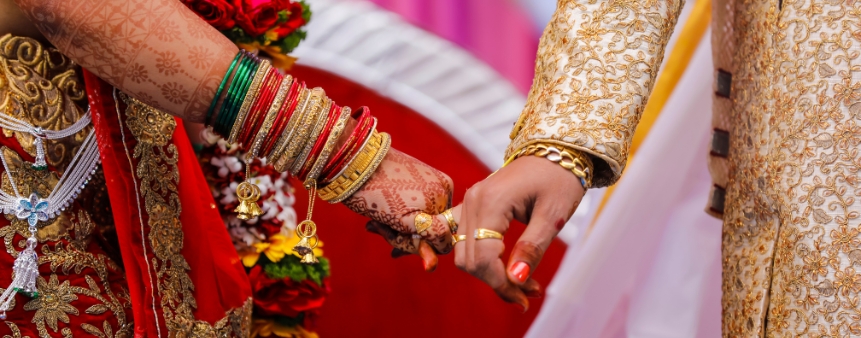Talk to India's best Astrologers
First Consultation at ₹1 only
Login
Enter your mobile number
Hindu weddings is one of the most elaborate ceremonies in India. They are marked by a series of rituals, customs and traditions steeped in rich cultural and religious heritage. One of the key aspects of Hindu weddings is engagement, also known as the 'Ring Ceremony' or the 'Sagai'.
The announcement ceremony is a crucial feature of the pre-wedding rituals. This ceremony is actually the engagement ceremony. It is typically held a few months before the wedding and symbolises the couple's commitment to each other. What do you do at engagement ceremony? Basically, during the engagement ceremony, the bride and groom exchange rings representing their love and faith in each other.
Close family members and friends of the couple usually attend the engagement ceremony. During the ceremony, the bride and groom are seated facing each other, and the priest performs a puja (prayer) to bless the couple and their future together. After the puja, the bride and groom exchange rings and commit to each other in front of their families and friends.
The ring ceremony meaning roots down to the exchange of rings, and many other rituals and customs are associated with the same. For example, the couple may light a sacred fire, which symbolises the light of knowledge and wisdom that will guide their lives. They may also exchange flower garlands representing their union and love for each other. The Indian engagement ceremony is also a time for families to get to know each other and build a strong bond before the wedding.
Now that we have answered the question, “what is a traditional engagement ceremony?” let us delve deeper into the elements of a traditional engagement ceremony.
Different regions in India have different customs and traditions associated with the engagement function. Here are a few examples:
These are just a few examples of an Indian wedding engagement that takes place in different parts of India. Despite the differences in customs and traditions, the underlying theme of all engagement ceremonies is the exchange of rings and the commitment of two individuals to enter into a lifelong union.
Here are some common Indian engagement ceremony traditions:
In an engagement ceremony meaning a “Roka” in Hindu culture, the bride and groom traditionally dress in traditional Indian attire. For the bride, traditional attire options include a saree or lehenga choli paired with elegant jewellery, such as earrings, bangles, and a necklace. In addition, the colour of the attire is often chosen to match the colour of the groom's attire. For the groom, traditional attire options include a sherwani, a kurta pyjama, or a conventional Hindu dhoti. In addition, the groom often wears a turban to complete the look.
It's important to note that attire choices can vary depending on regional and family traditions. However, with the advent of westernisation, the to-be bride and groom have switched from conventional Indian attire of sarees into gowns for brides and kurtas and sherwanis into suits. Some families may choose more modern or western dresses for the engagement ceremony. Ultimately, the selected clothing should reflect the couple's style and preferences.
